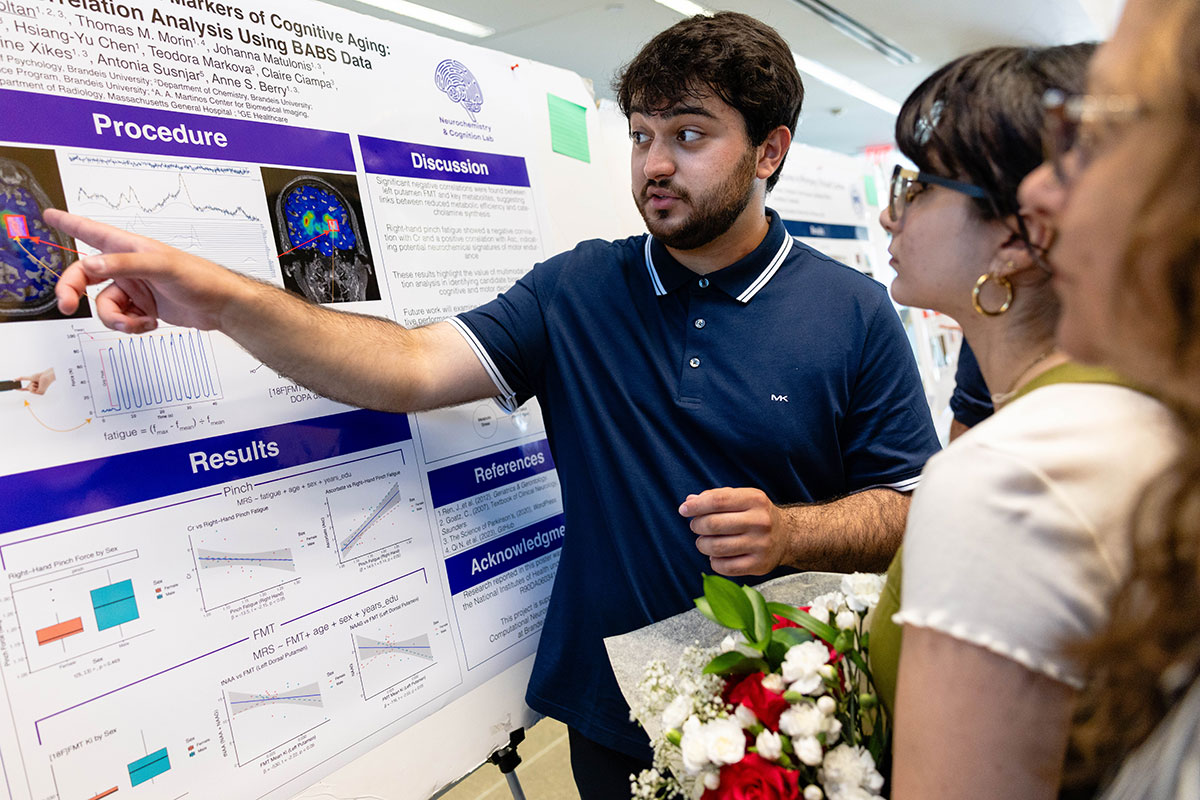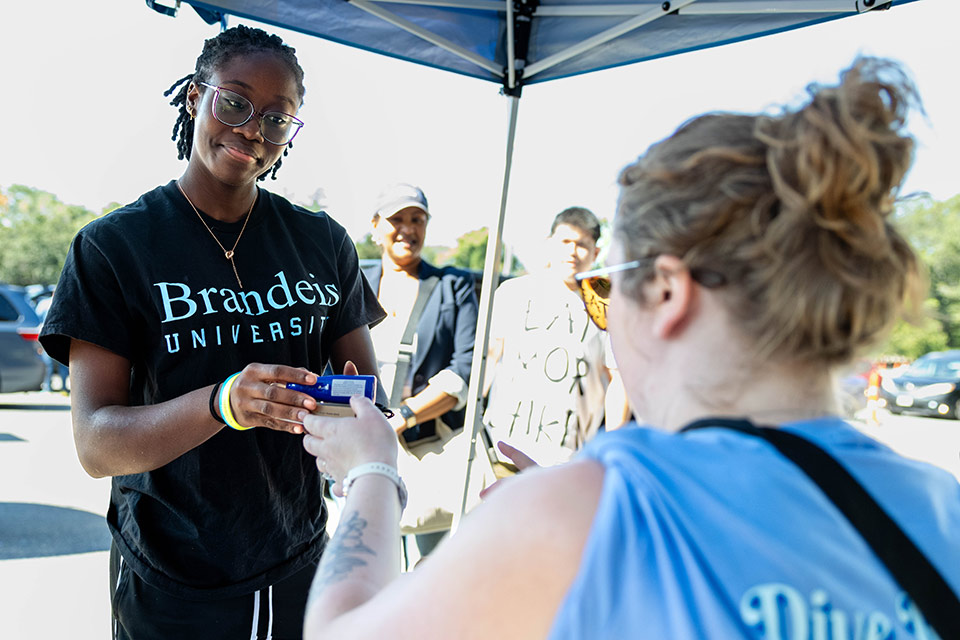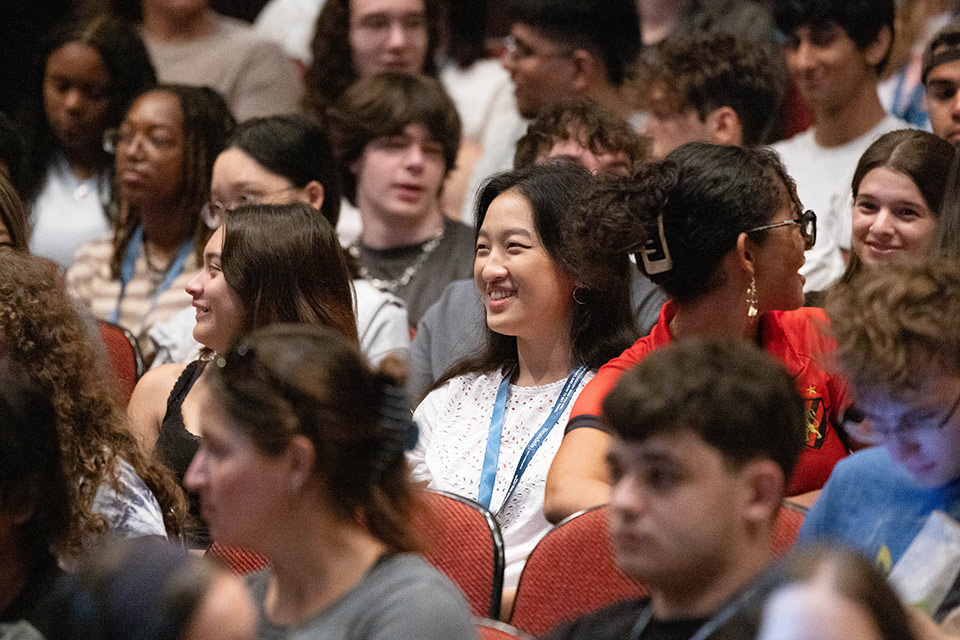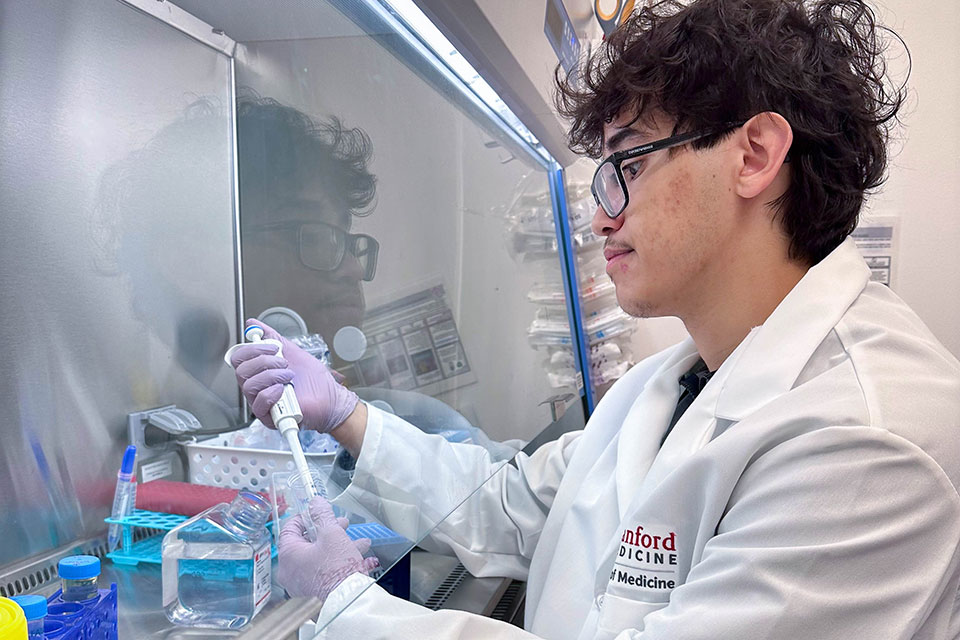Brandeis SciFest 2025: a celebration of student research and scientific innovation

By Julian Cardillo ’14
Photography by Gaelen Morse
August 12, 2025
Along with landing the most prestigious prizes and making cutting-edge discoveries, Brandeis scientists are also deeply invested in student research — a commitment celebrated annually at SciFest.
Each year, undergraduates spend over two months immersed in faculty labs, collaborating with professors, graduate students and peers before presenting their findings at this highly anticipated tradition, first held in 2011. This year’s event featured 96 students presenting their research at a poster session in the Shapiro Science Center, where they explained their findings with visitors from across the Brandeis campus.
Jacob Hillemann ’26, a chemistry major from Burlington, Vermont, modeled the production of red mud, a hazardous industrial waste created during aluminum extraction. His research estimated that the U.S. produces about 600,000 tons of dry red mud annually, highlighting both the environmental risks and potential resource value resulting from the waste.
Hillemann wants to pursue a career in climate change mitigation, combining his passions for both environmental studies and chemistry.
“I think it’s awesome that Brandeis offers so many high-level research opportunities for undergrads,” Hillemann said. “That’s one of the reasons I came here, because that’s not the case at most other schools. In fact, you typically can’t do this research until much further in your career. It’s different at Brandeis.”
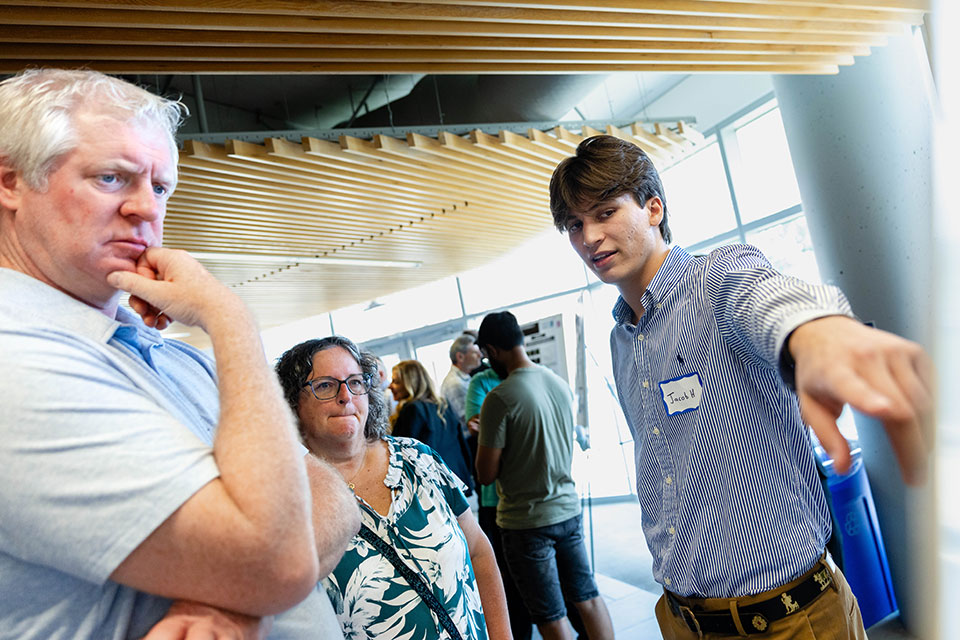
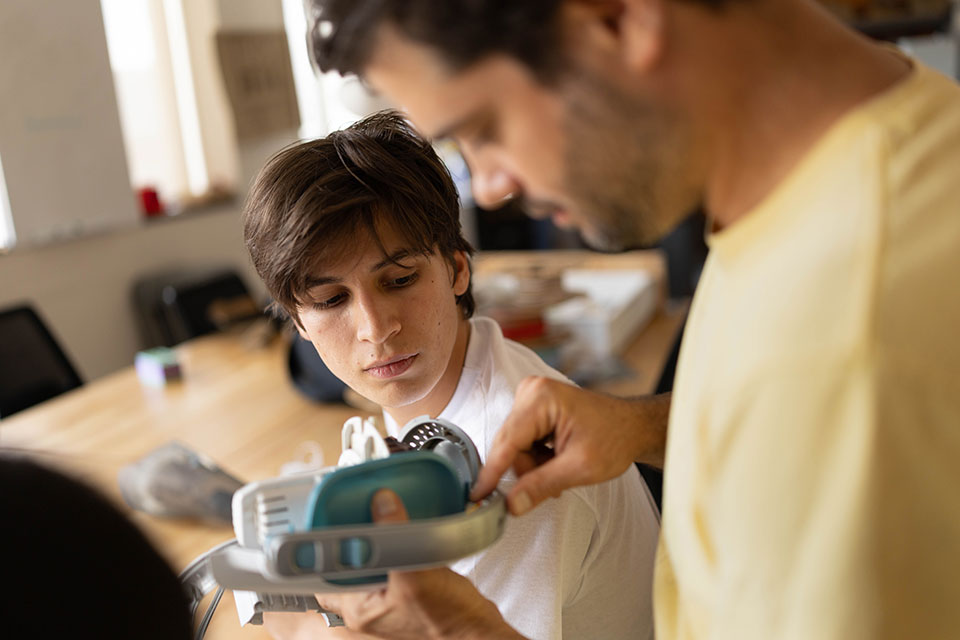
Sophia Fredberg ’26, a neuroscience and biology double major from Boston, studied how a little-known protein called IQG1 helps yeast cells divide. Fredberg conducted her research in collaboration with biology professor Bruce Goode.
Fredberg found that altering a small section of the protein disrupts the cell’s internal “railroad tracks,” affecting growth, cell shape and the transport of essential materials — insights that could reveal new details about how similar proteins work in more complex organisms.
“I’m so grateful for the mentorship opportunities in the sciences here, especially in Dr. Goode’s lab,” Fredberg said. “He puts a lot of time and effort into making sure that his undergrads are able to have a mentor who stays with them through graduation. It’s so valuable.”
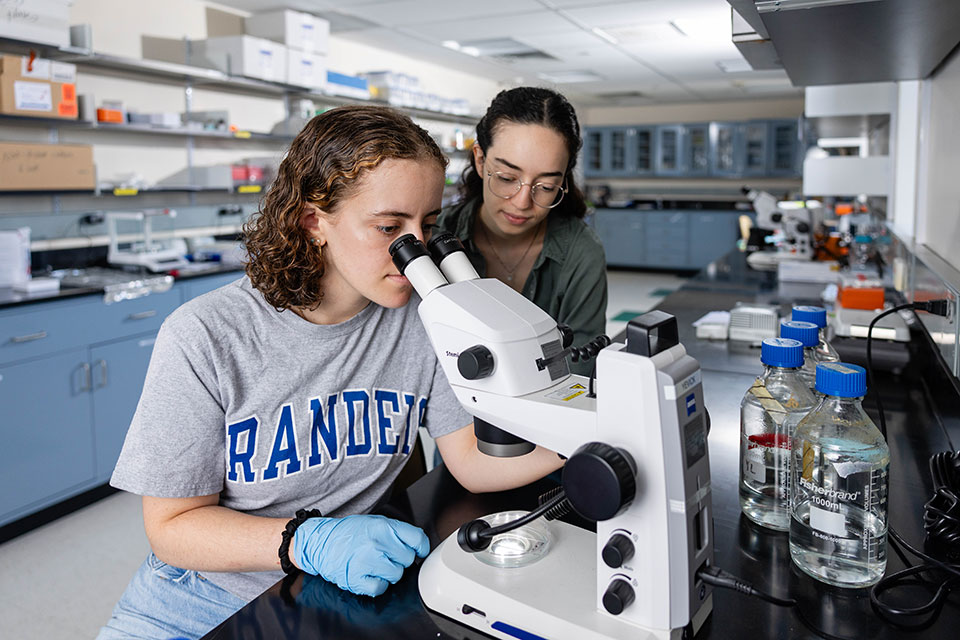
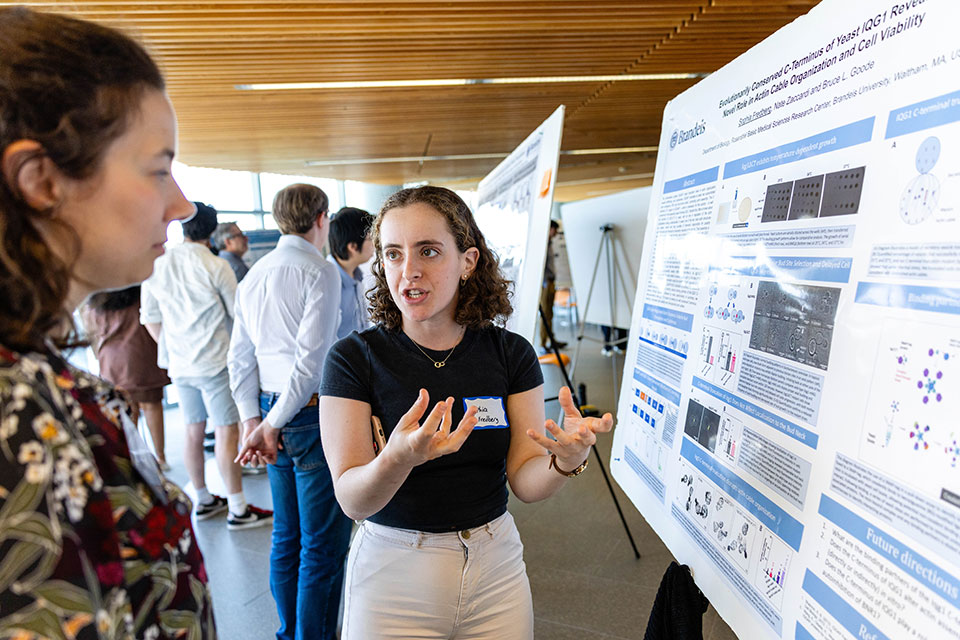
Joshua Vorchheimer ’27, a biophysics major from New York City, examined cellular fusion — a process important in muscle growth, the placental development and some viral infections.
By observing fused cells under different conditions, he found their shape and structure change depending on how much surrounding tissue is present and how long they’ve been fused, offering clues to how this process works in health and disease.
Vorchheimer, who hopes to pursue a career in internal medicine, says research experience is essential for developing the right mindset to truly understand the human body and help patients.
“I think that doing research is one of the best things for developing a scientific mind,” he said. “It allows you to not just read a scientific paper and accept it, but to understand what went into it — the methods, the process — and that’s essential to understanding the human body and how we can fix it and help people.”
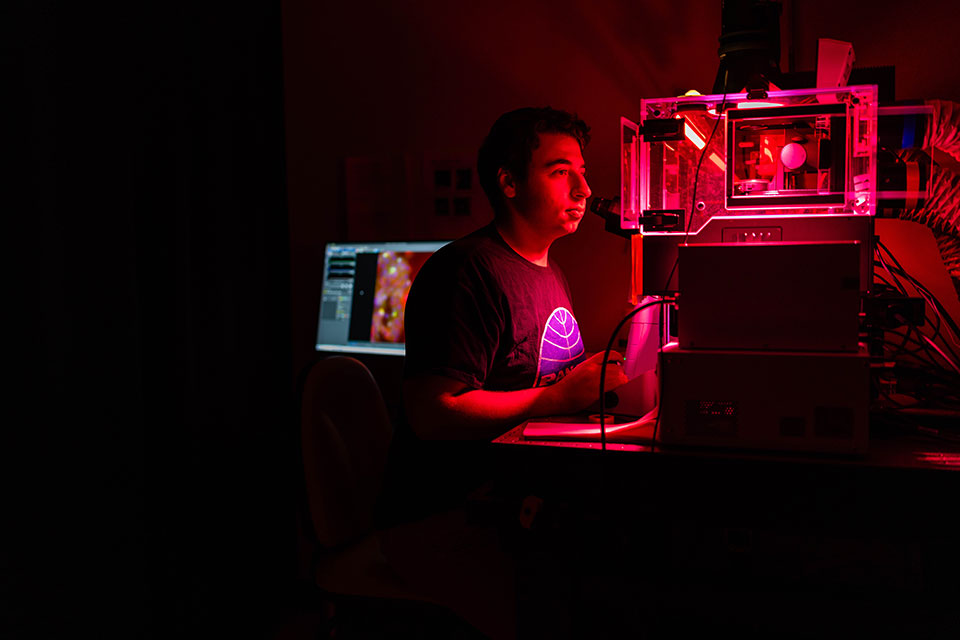
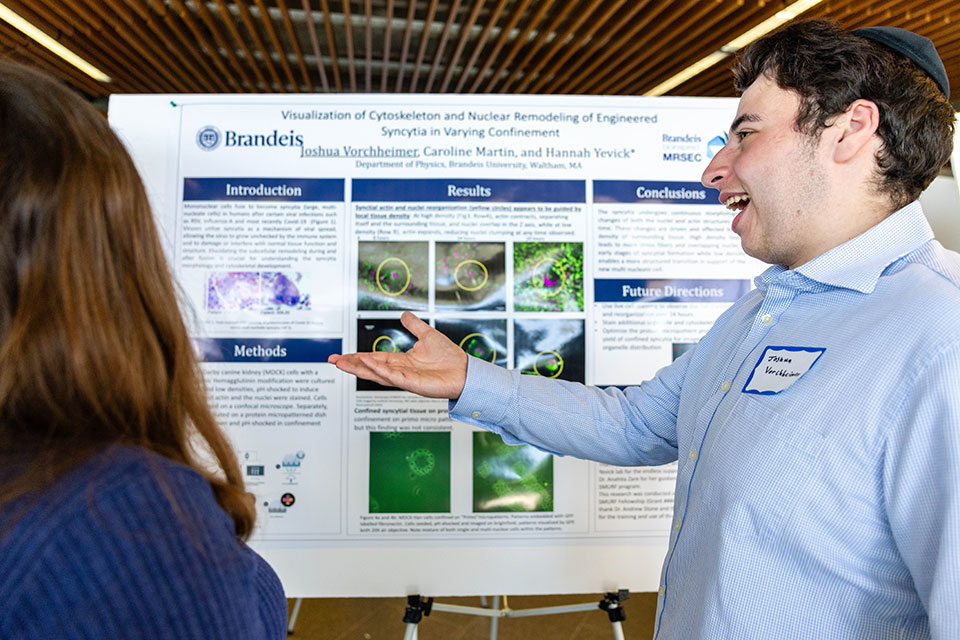
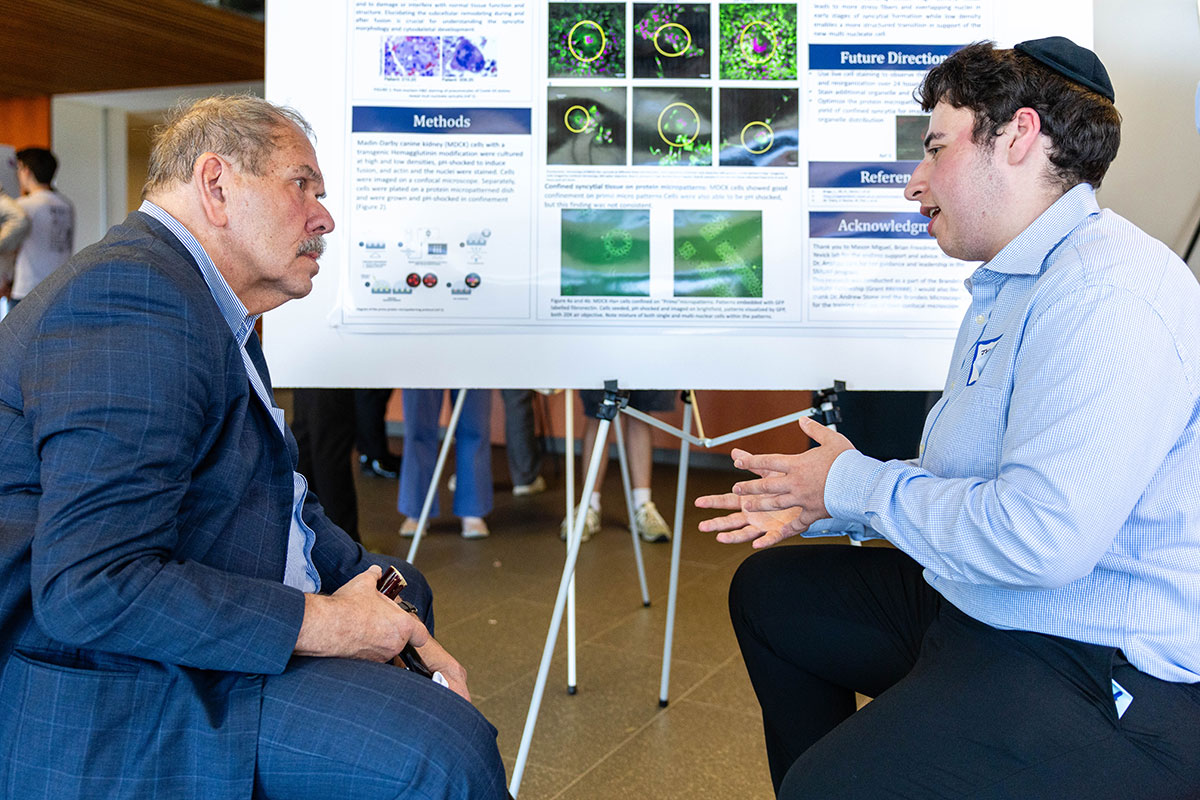
Meanwhile, biology majors Uyen Bui ’26 from Ho Chi Minh City, Vietnam, and Julian Gersh ’25 from New Jersey, collaborated on a project to study viruses called phages that can infect pseudomonas fluorescens, a bacterium widely used in evolutionary research.
They identified a diverse set of phages capable of infecting a strain that carries a protein called gasmin — linked to programmed cell death in the immune system — and found striking variation in the phages’ shapes and makeup.
“Our lab gives us a lot of freedom,” Bui said. “They really trust us to work on the things we want to work on, to explore the things we care about, and to go beyond just ideas. This kind of opportunity is really incredible.”

Shaian Aghasoltan ’26, a psychology major from Worcester, Massachusetts working in professor Anne Berry’s lab, studied aging in the brain and its connection to Alzheimer’s disease using advanced brain imaging techniques.
His research found that changes in certain brain chemicals correlate with motor function decline and dopamine production, shedding light on how metabolic stress might influence neurodegeneration.
“This whole summer I got to get paid to come here to Brandeis every day and live here on campus, and none of that would have been possible without this research opportunity,” said Aghasoltan, who hopes to pursue a PhD in neuroscience. “Being able to get this research experience and use all my skills has been really important to me.”
